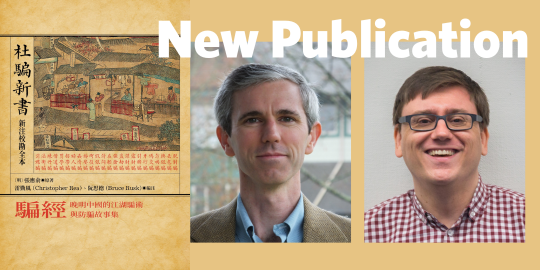

I am saddened to write that Professor Edwin G. Pulleyblank (1922-2013), passed away in Vancouver on Saturday, 13 April, 2013 at 4.36 PM. He was a distinguished Sinologist, linguist, and administrator. Professor Pulleyblank joined the Department of Asian Studies in 1966 and served as the Head of the Department from 1968 to 1975. In 1970 he was elected to serve as the Director of the Association of Asian Studies.
In case any colleagues/students who had the privilege to work with Professor Pulleyblank and would like to share their memories of him with us please write to me. We will post these on the Department’s web site.
Harjot Oberoi
Acting Department Head
Professor E. G. Pulleyblank (hereafter EGP) came to UBC in 1966, after thirteen years as Professor of Chinese at Cambridge. At the time of his arrival, he was still best known as a social, political, and intellectual historian of the T’ang dynasty, but the focus of his work had already shifted to the historical phonology of Chinese. Nonetheless, he has continued to publish occasionally in the fields of T’ang and early Central Asian history and has, as well, extended his work into the realm of general historical linguistics. It is no easy task to summarize EGP’s extraordinarily rich contributions to scholarship. A mere list of his publications runs to thirteen pages and is still growing. Moreover, many of the works appearing on it are extended pieces, dense with meticulously examined detail and significant propositions.
His first book,The Background of the Rebellion of An Lu-shan (Oxford University Press, 1955), proved him “always the historian, never the mere erudite,” (his own phrase, applied to Maspero, Pacific Affairs 1980). Background is the work of a historian who seeks to explore the problems that underlie and condition events, not simply to portray the character of ‘great men.’ As he remarks in his review of the first volume on the Sui and T’ang of the Cambridge History of China, “Whether Te-tsung was a fool or a wise man is not a question that interests me very much” (Harvard Journal of Asiatic Studies, 1981). Rather than simply retelling the familiar story of a doting Hsuan-tsung, a seductive Yang Kuei-fei, a wily Li Lin-fu, and a treacherous An Lu-shan, Background sets out to account for the political, military, and economic conditions that allowed their personal failings to unleash a catastrophe that had permanent effects on Chinese civilization.
Background ended with a promise of a second volume, intended to cover the rebellion itself and its aftermath. This volume has never appeared. Nonetheless, two important results of work on the post-rebellion period have made it into print, one a truly seminal piece on intellectual history, “Neo-Confucianism and Neo-Legalism in Tang Intellectual Life, 755-805” (in The Confucian Persuasion, 1960), the other an important account of post-rebellion military and administrative history and its consequences, “The An Lu-shan rebellion and the origins of chronic militarism in late T’ang China” (in Essays on T’ang Society, 1976).
As EGP himself has explained, it became clear to him, both from problems encountered in the use of Chinese transcriptions of foreign words in the writing of Background and in his attempts to bring historical phonology to bear on grammatical questions in Classical Chinese, that the reconstructions by Bernhard Karlgren of the premodern phonology of Chinese simply could not be made to agree with a broader range of evidence than Karlgren had used. Confronted with the monolith of Karlgren’s system and his reputation as the virtual creator and certainly the greatest master of modern studies of the historical phonology of Chinese, a lesser scholar might well have either suppressed the difficult evidence or, even more likely, have looked for a less problematical field in which to make a career. Nothing is more characteristic of EGP than his resolve to get to the bottom of the problem, whatever difficulties might arise in the form either of enormous toil or of injured sensibilities — Karlgren, for all his greatness as a philologist, regarded the reconstruction of premodern Chinese pronunciation as an accomplished task and, not incidentally, as one of his own accomplishing. The full force of his derision awaited anyone so incautious as to challenge the validity of his system, and all the more so in the case of EGP, whom the evidence soon compelled to move beyond the stage of simply amending Karlgren’s system in a few details to that of setting out to rethink the entire structure.
Just as in his work on T’ang history, the foundation for which was laid by his careful examination of the real nature and history of the sources, documented in his very first article, on the Tzu-chiht’ung-chien k’ao-yi and its relation to the sources, both extant and lost, for T’ang history (Bulletin of the School of Oriental and African Studies, University of London, 1950), EGP began his systematic work on early Chinese phonology by reexamining the sources. The crucial breakthrough was his recognition that the ‘Sung’ rhyme tables, which Karlgren had treated as though they were no more than a clever way of setting out the language of the Ch’ieh-yün (601 AD) in tabular form, in fact represented a quite different phonological system. To demonstrate this, EGP adduced not only the kinds of evidence used previously by Karlgren and others, such as comparison with modem regional forms of Chinese, but also Chinese transcriptions of foreign words and, most importantly, evidence from the rhyming of Tang poets, especially Li Ho, set out in a relatively short but conclusive paper published in the Ts’ing-hua hsüeh-pao in 1968. This article showed that the rhyming of poets evolved markedly between the time of the Ch’ieh-yun and the ninth century and did so in ways that agreed with the rhyme categories of the rhyme tables. From this it was clear that there was a genuine distinction to be made between ‘Early Middle Chinese,’ the language of the Ch’ieh-yün, and ‘Late Middle Chinese,’ that of the ninth and tenth centuries. A reconstruction of the latter was set out in detail in a two-part article published in 1970-71 in Asia Major.
The next stage was of course to prepare a new reconstruction for Early Middle Chinese. A preliminary version appeared in 1977, as an appendix to a paper on the dating of the Han-shan corpus, but the revised version had to await the publication of Middle Chinese (UBC Press, 1984), which also contains a significantly revised version of Late Middle Chinese. A companion volume giving reconstructed pronunciations for a large corpus of words in Early and Late Middle Chinese and in Early Mandarin is in preparation.
One aspect in particular of his earlier work in historical phonology raised issues of enormous potential significance. This is his reconstruction of a two-way contrast in head vowels, between a and the schwa, in contrast to the prevailing assumption at the time that the presence of at least three fundamental vowels was a universal characteristic of language. EGP’s counter-examples drew on the work of Kuipers and others on languages of the northwest Caucasus, particularly Kabardian. As he was quick to realize — having been interested in Indo-European studies even before taking up the serious study of Chinese — the significance of this parallel went far beyond simply buttressing his reconstruction of older forms of Chinese. In a series of papers published in the mid- 1960’s, he raised the possibility of a historical link between Indo-European, Sino-Tibetan, and the ancestral forms of some languages of the Caucasus (“The Indo-European vowel system and the qualitative ablaut,” Word, 1965;“Close-open ablaut in Sino-Tibetan,” Lingua,1965; “Chinese and Indo-Europeans,” Journal of the Royal Asiatic Society, 1966). The importance of these papers is the more evident if one conflates the conclusions of two of them: “Even at the present stage the pattern seems clear enough and consistent enough to make it probable that Sino-Tibetan had not only the same vowel structure as the north-west Caucasian languages and Indo-European but also attached the same meaning to the alternation between the close and open pair of vowels” (Lingua). “Some sort of historical explanation indeed seems inescapable, but I leave this, and perhaps even wider implications, aside for the present” (Word).
EGP’s continued work in this area has raised fundamental questions about the nature of vowel systems in general, and it is characteristic of him that he has not shirked the task of exploring the theoretical consequences of his findings, but has contributed instead to the discussion of broader issues in linguistics in a number of substantial papers, including “The analysis of vowel systems” (Acta Linguistica Hafniensa, 1972),“Abruptness and gradualness in phonological change,” (in Linguistic and literary studies in honor of Archibald A. Hill,1978), “The beginnings of duality of patterning in language,” (in Glossogenetics: the origin and evolution of language,1983), and “Some issues in CV phonology with reference to the history of Chinese,” (Canadian Journal of Linguistics, 1986)
Recently, EGP’s interest in the possibility of contacts between the earliest forms of Chinese and the languages of the West has unfolded in a series of studies of the origins of the sexagenary cycle of twenty-two ‘stems and branches’ used for recording time since the earliest known records of Chinese history. Although he has set aside for now the attempt to link the earliest written forms of the stems and branches with early forms of the Western alphabet, the evidence he has gathered suggests that the ‘stems and branches’ were originally a kind of syllabary. This is a discovery of great significance, for it promises to contribute to a solution of the most difficult problem in the reconstruction of Old Chinese (the language of the Chou dynasty, ca. 600 BC), determining the system of initials.
This project has demonstrated with particular clarity EGP’s approach to scholarship, an approach that might be characterized as ‘scientific’ in the truest sense of the word, comprising and insistence on the primacy of reason, a readiness both to venture bold hypotheses — clearly labeled as such — and to modify them in response to reasoned criticism from colleagues, a combination of meticulous attention to detail with breadth of reference, a sense of the relationship between details and their significance, and above all the consistent practice of objective criticism both of one’s own work and that of others, swayed neither by personal partiality nor by failures to respond in the same spirit (as in the case of Karlgren).
One sees this last aspect of the scientific spirit of scholarship in the cases in which EGP has discussed the issues over which he disagrees with his colleagues. Two examples stand out, his treatment of the question of priority between the Shih chi and the Han shu accounts of Central Asia, on which he differed with Hulsewé and Loewe (The International History Review, 1981), and his account of the problems encountered in the process of replacing Karlgren’s reconstructions (Journal of the American Oriental Society, 1985). In both instances, the emphasis is on the evidence and its requirements, rather than on personal animus directed at those with whose work he is disagreeing.
Underlying this attitude is an assumption central to the scientific approach to scholarship, that one is participating in a common enterprise. One aspect of this participation is contribution to collective projects. In spite of the pressing demands of his own work, EGP has done a great deal along these lines, whether the projects were highly specialized, such as the conference on the date of Kaniska (Papers on the Date of Kaniska, 1968) or the paper, prepared with five other co-authors, on a T’ang project in planetary measurement published in Vistas in Astronomy (1964), or intended to introduce a wide readership to important aspects of Chinese civilization (e.g. Orientalism and History, 1954; Historians of China and Japan, which EGP co-edited with W. G. Beasley, 1961; The Legacy of China, 1964; and The Unity of China, 1969). The most ambitious of all these pieces is the most recent, “The Chinese and their neighbors in prehistoric and early historic times,” in The Origins of Chinese Civilization (1983), a tour de force of imaginative synthesis, combining textual, linguistic, and archaeological evidence with a mastery of the relevant secondary literature.
A much more common way of contributing to the common task is by the writing of reviews. EGP has done very little reviewing during the past decade, but prior to this he was very active. One finds in his reviews the same concerns that shape his own work, even if expressed more often than not in negative terms. A common cause for complaint in the reviews is the effect of some self-imposed but inappropriate limit either on the evidence to be considered or on the kind of significance that the evidence can be allowed to have. One such limit is the grand theoretical scheme that ignores or distorts relevant data. Particularly in the first decade or so of his work, before he began to concentrate on historical linguistics, EGP had occasion to deflate a number of theoretical blimps, including Eberhard’s ‘Gentry Society’ (Bulletin of the School of Oriental and African Studies, University of London, 1953), Wittfogel’s ‘Oriental Despotism’ (Bulletin of the School of Oriental and African Studies, University of London and Journal of the Economic and Social History of the Orient, 1958), and the attempt to impose Marx’s ‘Slave Society’ on Chinese history (“The origins and nature of chattel slavery in China,” Journal of the Economic and Social History of the Orient, 1958). Much more recently, he was able to bring his experience in the study of both early Chinese history and Chinese contacts with other peoples, especially via Central Asia, to bear in a concise but deeply telling critique of Ho Ping-ti’s anti-diffusionist treatment of the origins of Chinese civilization, Cradle of the East (Journal of Asian Studies, 1977).
Another arbitrary limit on the practice of history is the Chinese tradition of ‘praise and blame’ historiography, which has come in for several lambastings. As EGP put it in one instance, “the purpose of studying historical questions in general, and the history of historiography in particular, is not to award marks of merit or demerit (pao-pien) according to some absolute standard, moral or otherwise, but to discover more about the evolution of human beings and their institutions in diverse circumstances” (Journal of Asian Studies,1979).
EGP has also called attention to a whole range of less obvious failures to think clearly about the effects of ignoring relevant material or of imposing arbitrary limits on the scope of one’s sources. One of these is the assumption that a good way to go about advancing the study of Chinese history would be to translate and annotate ‘biographies’ (lieh-chuan) from the dynastic histories rather than studying historical problems by applying the full range of relevant evidence (Journal of Asian Studies, 1961). Another is the ignoring of relevant secondary literature, especially that in Japanese. We tend to take this for granted now (even Chinese scholars are beginning to make occasional references to work done outside China), but EGP was rather a lone voice in the wilderness when he raised this issue in the 1950’s.
A particularly striking case involved a review of a study of the Turks during the Five Dynasties period, based on Chinese sources. EGP pointed out that not only had relevant Japanese scholarship been ignored, but that phonological evidence, crucial to the proper understanding of Chinese references to non-Chinese terms and persons, had also not been properly taken into account and that the cut-off date chosen (960, the end of the ‘Five Dynasties’ period in China), what ever its significance for China, had no particular meaning for the study of Central Asia, but merely reflected a matter of convenience in the use of Chinese sources (Journal of the Royal Asiatic Society, 1957). This sort of unconscious Sino-centrism (not to speak of more overt forms, for which see Pacific Affairs, 1968) is the very opposite of EGP’s concern with the study of China as part of the study of humanity as a whole.
But here it is Euro-centrism, rather than Sino-centrism, that EGP has worked most assiduously and successfully to reduce. In his inaugural professorial lecture at Cambridge, he remarked, “Anyone who devotes himself to the study of Chinese must become inured to the scarcely concealed amusement and the facetious comments with which this information is not infrequently received.” The world has clearly changed a great deal since those words were written, and to no small extent the change is due to the patient labours of EGP and others who have undertaken to demonstrate the relevance of the Chinese experience to any attempt to understand humanity as a whole, arguing, as he has, that “if it can be said that one of the purposes of history is to help us to understand the nature of man with all its limitations and potentialities, then we have not fully appreciated our task if we leave Chinese man out of account” (in Orientalism and History, 1954). It is above all an appreciation both of the importance of the task and of the need to perform it well that EGP has given to those of us so fortunate as to have studied with him and to the profession as a whole. That he has spent the largest part of his career at the University of British Columbia is an honor to the institution and a source of pride and pleasure to his colleagues and students alike.


